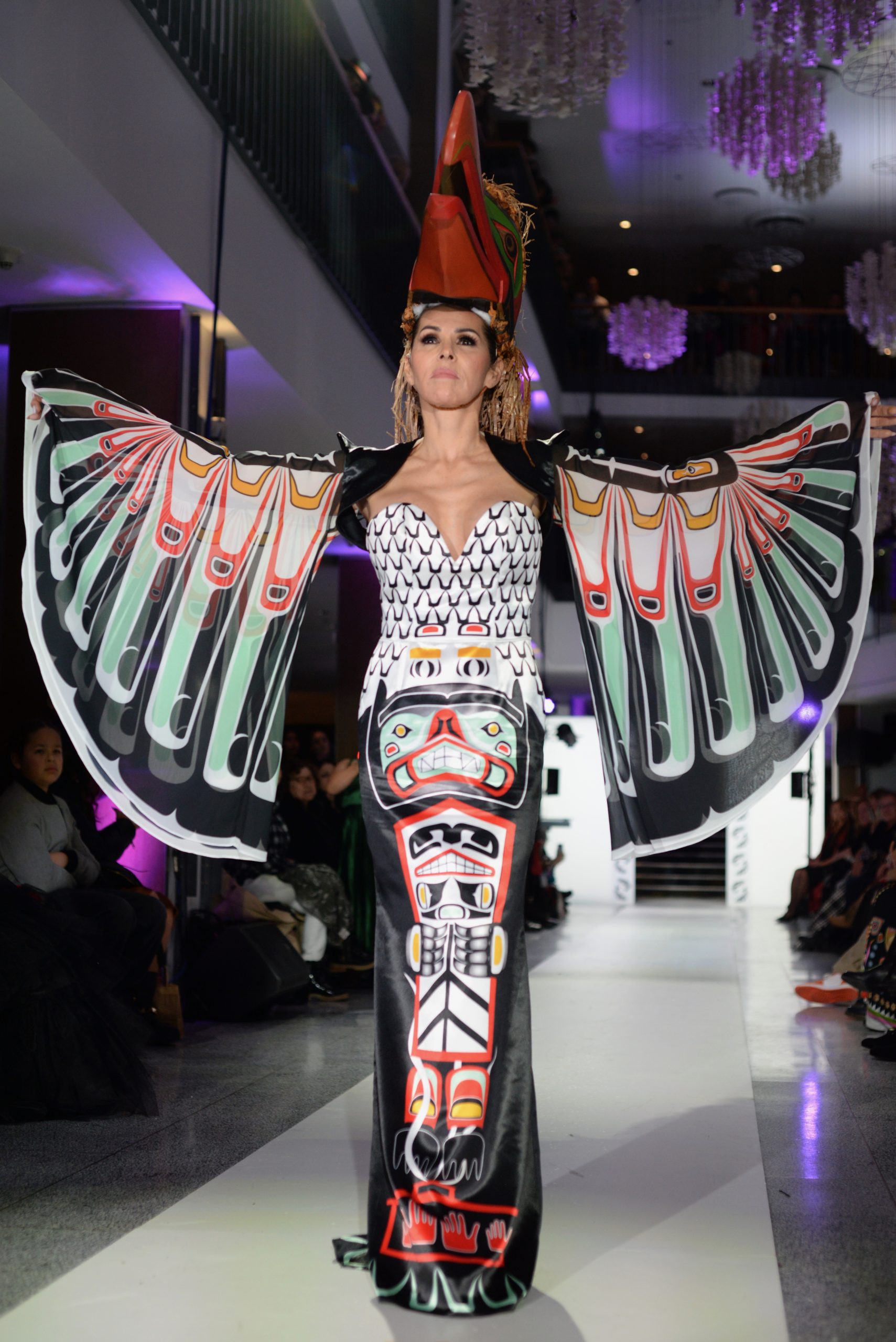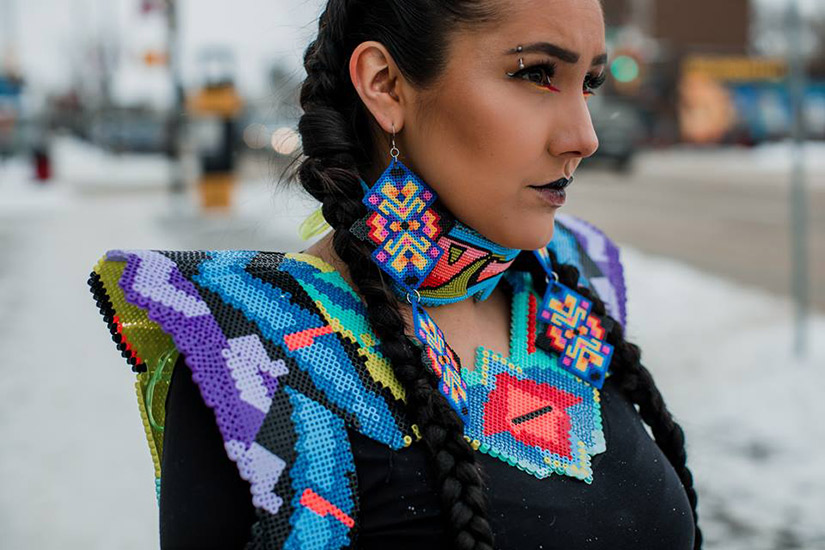
Weaving Sovereignty: The Resurgent Power of Indigenous Fashion on Turtle Island
On Turtle Island, a powerful cultural renaissance is unfolding, not in hushed museum halls or academic conferences, but vibrantly, boldly, and unapologetically on runways, in boutiques, and across global digital platforms. Indigenous fashion designers, long relegated to the periphery or subjected to the scourge of cultural appropriation, are seizing their rightful place at the forefront of the industry. This is not merely about aesthetics; it is a profound movement of decolonization, economic self-determination, and the reclamation of narrative, driven by designers whose creations are deeply interwoven with ancestral knowledge, community values, and a fierce commitment to authenticity.
For centuries, Indigenous dress has been viewed through a colonial lens: as "costumes" for performance, as artifacts of a bygone era, or worse, as inspiration for non-Indigenous designers to exploit without credit or compensation. Today, a new generation of creators is dismantling these harmful perceptions, demonstrating that Indigenous fashion is inherently contemporary, innovative, and deeply rooted in living cultures. Their work challenges the mainstream’s narrow understanding of Indigenous identity, proving that tradition is not static but a dynamic, evolving source of inspiration that can seamlessly blend with modern silhouettes, sustainable practices, and high-fashion sensibilities.
At the heart of this movement is a commitment to storytelling. Each stitch, bead, pattern, and fabric choice often carries generations of history, ceremony, and worldview. Designers are not just making clothes; they are weaving narratives of resilience, joy, struggle, and connection to the land. This practice is a powerful counter-narrative to the often-homogenizing and stereotypical representations of Indigenous peoples. By controlling their own creative output, designers are asserting cultural sovereignty, ensuring that their stories are told accurately and with the respect they deserve.
One of the most compelling aspects of Indigenous fashion is its inherent connection to sustainability and ethical production. Long before "eco-fashion" became a buzzword, Indigenous communities lived by principles of reciprocity and respect for the natural world. Many designers continue this legacy, utilizing natural dyes, ethically sourced materials, traditional tanning methods, and emphasizing zero-waste practices. Their approach often contrasts sharply with the fast-fashion industry’s exploitative models, offering a blueprint for a more responsible and regenerative way of creating. This isn’t a trend; it’s an ancestral imperative.
The rise of Indigenous fashion is also a potent force for economic empowerment within communities. By establishing their own brands, designers are creating jobs, fostering skill development, and building sustainable economies that circulate wealth locally. This is a crucial step towards addressing historical inequities and building self-sufficient futures. Platforms like Indigenous Fashion Week Toronto (IFWTO), founded by Anishinaabe fashion designer and advocate Sage Paul, have been instrumental in creating a space for designers to showcase their work, connect with buyers, and educate the public. "Fashion is a powerful tool for cultural expression, economic development, and social change," Paul asserts. "It’s about building an industry that reflects our values and supports our people." IFWTO, since its inception, has amplified hundreds of Indigenous designers and artists, demonstrating the immense talent and demand within this burgeoning sector.

Among the constellation of designers making waves, several stand out for their distinct visions and profound impact.
Bethany Yellowtail (Northern Cheyenne, Apsaalooke): The founder of B.Yellowtail, her work is a vibrant celebration of her Crow and Northern Cheyenne heritage. Known for her intricately beaded jewelry, flowing textiles, and contemporary garments featuring traditional motifs, Yellowtail’s brand is deeply committed to ethical production and community collaboration. Her "Collective" initiative directly supports other Indigenous artists, providing a platform for their work and ensuring fair compensation. Yellowtail’s designs often tell stories of land, family, and ceremony, making her clothing not just wearable art, but a tangible connection to Indigenous identity and resilience. "Our designs are not just pretty clothes," she explains, "they are stories, they are prayers, they are our identity. When you wear a piece, you’re wearing a part of our history and our future."
Lesley Hampton (Anishinaabe, Mohawk, Dene): A rising star in the Canadian fashion scene, Hampton is renowned for her inclusive sizing, body-positive messaging, and powerful advocacy for mental health. Her designs blend traditional Indigenous aesthetics with modern, sophisticated silhouettes, often featuring bold colours and strong lines. Hampton has showcased at New York Fashion Week, bringing Indigenous representation and vital conversations about diversity to a global stage. Her collections frequently draw inspiration from her Anishinaabe roots, subtly weaving in cultural elements while maintaining a contemporary appeal. Hampton’s work embodies the idea that Indigenous fashion can be both deeply meaningful and universally stylish, pushing boundaries in both design and social consciousness.
Jamie Okuma (Luiseño, Shoshone-Bannock): Hailed as a master of traditional beadwork, Okuma transcends the boundaries of art and fashion. Her exquisite, museum-quality pieces—from meticulously beaded handbags to haute couture garments—are collected by institutions like the Smithsonian National Museum of the American Indian. Okuma’s work seamlessly merges historical techniques with modern luxury, demonstrating the timeless elegance and intricate craftsmanship inherent in Indigenous art forms. Her creations are not just garments; they are wearable sculptures, pushing the dialogue around Indigenous art into the realm of high fashion and luxury goods, commanding respect and admiration on an international scale.
Sho Sho Esquiro (Kaska Dena, Cree): Esquiro is an avant-garde designer whose work is a powerful commentary on environmental issues and Indigenous rights. Known for her use of unconventional materials, upcycling, and deconstructed forms, her designs are bold, sculptural, and often incorporate elements like fur, leather, and reclaimed materials in unexpected ways. Esquiro’s collections are not merely clothing but statements, challenging consumers to think about the origins of their garments and the impact of the fashion industry. Her uncompromising vision and commitment to sustainability make her a trailblazer in the intersection of fashion, art, and activism.
The journey for Indigenous designers is not without its challenges. Cultural appropriation remains a persistent threat, with non-Indigenous brands often copying designs or motifs without permission, understanding, or proper attribution. This not only disrespects the cultural significance of the designs but also robs Indigenous artists of economic opportunities. However, the increasing visibility and collective strength of Indigenous designers are empowering them to call out appropriation more effectively and demand respect for their intellectual and cultural property. Legal frameworks and greater public awareness are slowly shifting the landscape, but vigilance remains crucial.
Moreover, systemic barriers such as limited access to funding, mentorship, and mainstream retail channels continue to exist. Despite these hurdles, the resilience and creativity of Indigenous designers prevail. They are building their own infrastructure, fostering community support, and leveraging digital platforms to reach global audiences directly. Social media, in particular, has become a powerful tool for self-promotion and direct engagement with consumers, bypassing traditional gatekeepers.
Looking ahead, the future of Indigenous fashion on Turtle Island is bright and expansive. It is a movement poised for continued growth, global recognition, and deeper impact. As consumers increasingly seek authenticity, sustainability, and ethical production, Indigenous designers are uniquely positioned to meet these demands. Their work offers a profound alternative to the often-homogenized world of mainstream fashion, providing garments that are not only beautiful but also imbued with meaning, purpose, and a deep connection to culture and land.
This is more than a trend; it is a fundamental shift in how the world perceives and values Indigenous creativity. By weaving sovereignty into every thread, Indigenous fashion designers on Turtle Island are not just shaping the future of style; they are reclaiming history, fostering pride, and demonstrating the enduring power of their cultures for generations to come. Their designs are a vibrant declaration of existence, resilience, and an undeniable force in the global fashion landscape.



